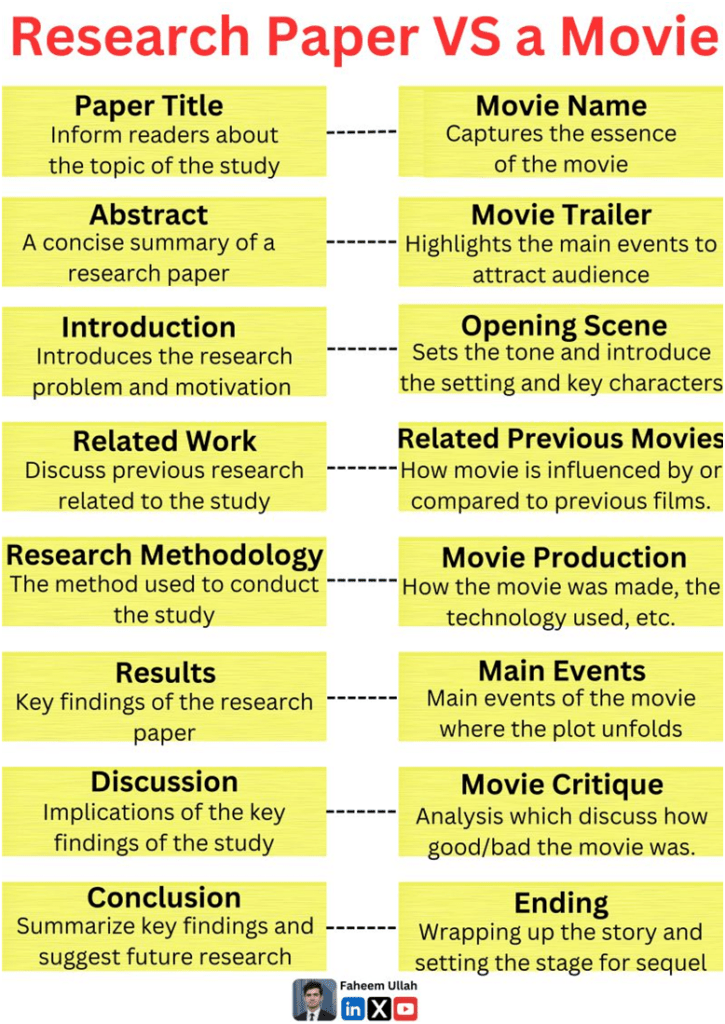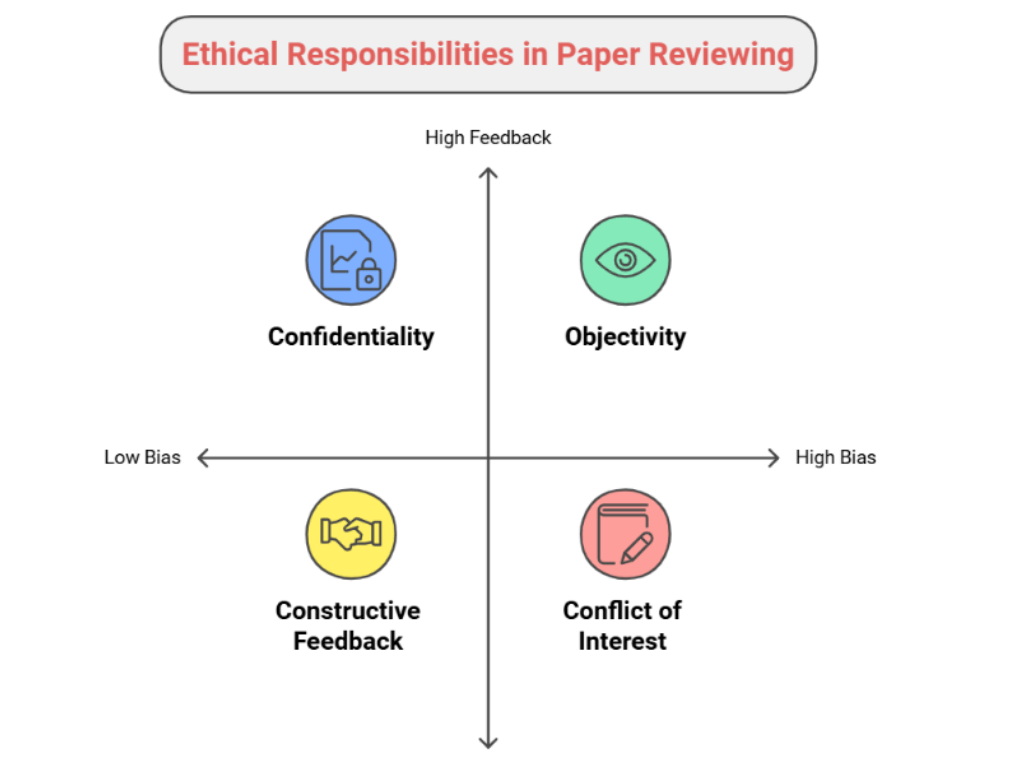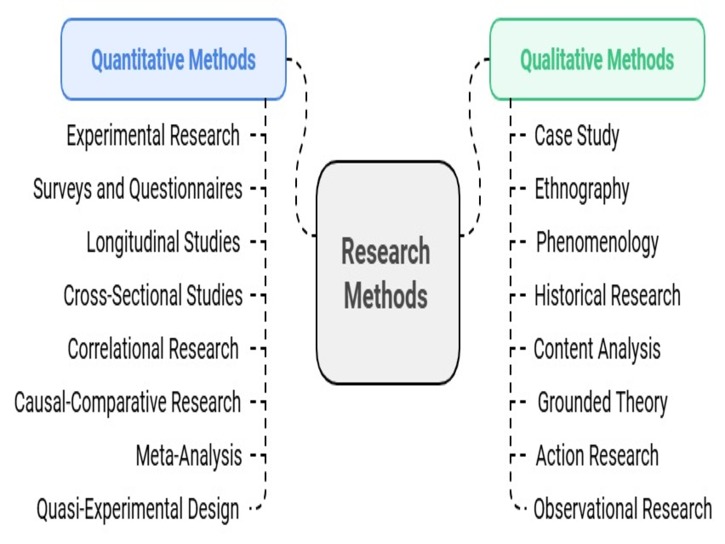In the world of academia, the journey of crafting a research paper can often feel daunting. But what if we looked at it through a different lens? Imagine viewing your research not just as a scholarly endeavor but as an engaging, dynamic narrative, much like a blockbuster movie. This fresh perspective can transform the way you approach your research, making the process not only more understandable but also more exciting. Let’s delve into this cinematic comparison to help PhD students and researchers approach their papers with renewed enthusiasm and clarity.

1. Paper Title VS Movie Title
Just as a movie title encapsulates the essence of the film, the title of your research paper should precisely convey the core of your study. It’s the first impression, the initial hook that attracts your audience—be they scholars or practitioners. Choose a title that is both informative and captivating, making sure it reflects the depth and scope of your research.
2. Abstract VS Movie Trailer
Think of your paper’s abstract as its movie trailer. This is your chance to highlight the key aspects of your research in a concise and compelling way. Like a trailer, your abstract should give just enough information to intrigue your readers, providing a glimpse of the study’s background, methods, and findings without giving away every detail. Aim to spark curiosity and anticipation, enticing your audience to dive into the full paper.
3. Introduction VS Opening Scene
The introduction of your paper sets the stage, much like the opening scene of a movie. Here, you introduce the research problem and outline the motivation behind your study. It’s about setting the tone and providing the context in a way that’s both informative and engaging. Your introduction should draw readers into your scholarly narrative, just as a compelling opening scene pulls viewers into the story unfolding on screen.
Do you want to identify research gap in minutes?
If yes, then try Undermind.
How Undermind can help you?
➟ Undermind will first identify research papers for your research topic.
➟ Then, it will help you to identify research gap based on those relevant papers.
Check it out here: www.undermind.ai
4. Related Work VS Related Movies
In the related work section, you discuss previous research and position your study within the existing literature. Similarly, movie critiques often compare a film to related works, discussing influences and trends. This section should showcase your scholarly rigor and your study’s place within the broader conversation, helping your readers understand the novelty and relevance of your work.
5. Research Methodology VS Movie Production
Your methodology section details the framework and methods used in your study, akin to how a movie’s production section describes the filmmaking process, techniques, and technologies used. This is where you justify the approaches taken and explain the choices made, ensuring your audience understands the reliability and validity of your work.
6. Results VS Main Events
The results of your research are the main events of your narrative. This section unfolds the plot of your scholarly work, revealing the key findings and the pivotal moments of your study. It should be clear and dramatic, presenting your data and results in a way that holds the reader’s attention and underscores the significance of your discoveries.
7. Discussion VS Movie Critique
In the discussion, you delve into the implications of your findings, exploring what they mean for the field and how they advance our understanding. This mirrors a movie critique, where the strengths and weaknesses of the film are analysed in depth. Your discussion should critically engage with the results, offering insights and sparking further inquiry.
7. Conclusion VS Ending
Finally, your conclusion wraps up your research narrative. It summarizes the key findings and points towards future research possibilities, much like how a movie’s ending provides closure while often setting the stage for a sequel. This section should leave your readers satisfied but also pondering future questions and challenges.
By reimagining the research process as a cinematic adventure, you can transform the task of writing into a more thrilling and approachable experience. Engage with your scholarly work as you would with a film: with anticipation, critical thought, and creativity. This approach not only makes your journey as a researcher more enjoyable but also enhances the clarity and impact of your work, ensuring it resonates with your audience and leaves a lasting impression.
So, next time you sit down to draft or revise your research paper, picture yourself as the director of your own academic blockbuster. Lights, camera, action—let the research begin!
Don’t forget to read: 10 Simple Ways to 10x your PhD Productivity
For more on this, check my YouTube.
YouTube Channel: www.youtube.com/@DrFaheemUllah

Find me on Instagram


